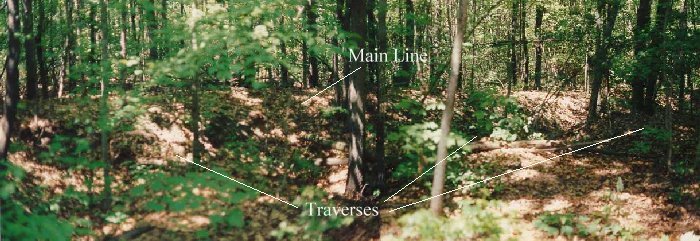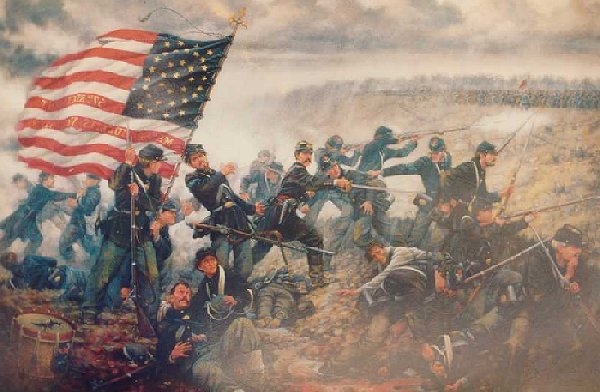
North Anna - Part 2
May 23 to 27, 1864

Preserved Earthworks
The Confederate entrenchments are visible in the background of the picture. Behind them, officers were positioned in riflepits to manage the battle and to keep their men in line.

Line With Traverses
Because the Rebel line was an inverted V, Yankee artillery enfiladed the line from the northern bank. To protect against this, the Confederates constructed traverses, or sections of earthworks that extended slightly to the rear. These traverses would absorb Union fire that would otherwise be extremely deadly.

Ledlie Attacks
Burnside's IX Corps faced the tip of the V at Ox Ford and was unable to make any headway against the ford, which was dominated by the bluffs on the Confederate side. Burnside sent a division to cross upstream to flank the position. These men were held off by 300 skirmishers while the Rebels completed their fortifications.
Brig. Gen. James Ledlie, who had been drinking heavily, against orders ordered his brigade forward to take the entrenchments during a thunderstorm. Predictably he was repulsed with heavy losses. This is a print by Donna Neary displayed at the park depicting Lt. Col. Charles Chandler who was killed leading his 57th Massachusetts during the attack. Ledlie was promoted to divisional command and gained further infamy at The Crater at Petersburg.
Lee became sick during the battle, and his corps commanders failed to carry out his plan to defeat the enemy in detail. That night Grant realized the danger and ordered his men to entrench, ending Lee's rare opportunity to strike a decisive blow. After 2,600 Union casualties and 2,500 Confederate, Grant continued the march south. In the Shenandoah, the Federals took advantage of Breckinridge's absence to launch Hunter's Raid.